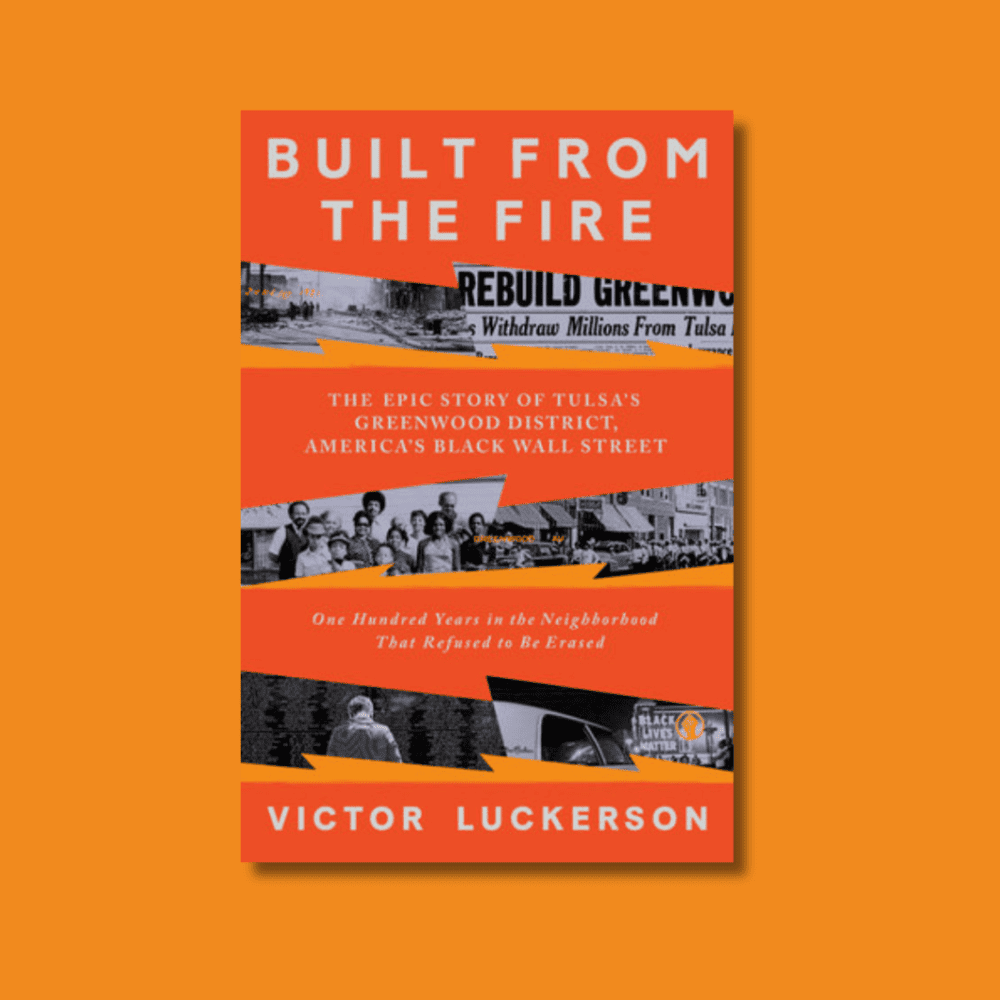Victor Luckerson, UA alum and former editor-in-chief of The Crimson White, has released his book “Built from the Fire: The Epic Story of Tulsa’s Greenwood District, America’s Black Wall Street,” after studying community journalism in Tulsa, Oklahoma, for the past three years.
In his book, Luckerson describes the history of the two-day 1921 race massacre in the Greenwood community, where white supremacists burned Black homes and the business district known as Black Wall Street.
“I always like to say that Greenwood’s history is more than just two days. It’s a community that’s been around for 118 years,” Luckerson said.
Unlike most authors, who only cover those two days of the massacre, Luckerson goes beyond the tragedy to focus on families and their successes despite these obstacles — for example, the Goodwins, a family that has maintained a newspaper business in the district.
“This book really walks through what’s gone on in this neighborhood throughout that whole time. So the book is a family story, as well as being a community story and a story about American history,” Luckerson said.
The New York Times called Luckerson’s book “ambitious” and “absorbing” as it leaves readers with a new sense of hope.
The Star Tribune’s Joseph Williams called Luckerson’s book “a rise from the ashes” story that consists of “an uphill climb against steep odds.”
On June 22, the Birmingham Public Library and Thank You Books sponsored a book talk with Luckerson, moderated by Alabama Poet Laureate Ashley M. Jones.
Jones said Luckerson’s book addressed many topics, including what reconciliation and reparations might look like today and how being from Montgomery, Alabama, influenced him to pursue this long-term project.
Jones said Luckerson used his book to talk about how Greenwood families have created justice and change.
“It also talks about this American story of Black people being targeted just for existing,” Jones said.
Jones explained how the book helped her have a better understanding of Black history and hopes students will feel the same way.
“It kind of makes me reinvigorated to continue doing similar work myself to make sure our history is documented in a holistic way, not just trauma, but the full lives that we live,” Jones said. “It also has made me excited for students to read a book like this and learn about American history from someone who is honest and earnest in telling it.”
Luckerson said he wanted to focus on the successes of Black people, along with the trauma in his story.
“A lot of times, we learn about Black people being traumatized in some way, whether it’s as slaves or being attacked during the Civil Rights Movement, but I was very interested about Black entrepreneurship and success in Greenwood,” Luckerson said. “While the book does explain a lot of the obstacles Black people faced, it also shows the resilience they had to overcome all of those obstacles.”
As a journalist, Luckerson was interested in telling the untold success stories of Black Wall Street. Luckerson began writing around the age of five and entered the world of journalism after becoming the editor-in-chief for The Crimson White during his time in college.
After graduating and writing for Time magazine and The Ringer as a national reporter, Luckerson decided to focus on telling the story of Black Wall Street.
“I learned a lot about covering a small community just covering The University of Alabama, and I was able to apply those skills when I moved out here to Tulsa,” Luckerson said.
After moving to Tulsa to work on his book, Luckerson said his appreciation for community journalism grew.
“Having been embedded here in Tulsa for so long, it’s really made me appreciate the value of community journalism and getting to know the neighbors that you cover,” Luckerson said.
Luckerson spent hours sifting through public records, including land documents, urban renewal documents, and highway construction documents at the Tulsa County Courthouse.
The other half of Luckerson’s research came from hours of talking to residents of Greenwood who grew up in the area during the 1940s and ’50s or were descendants of people who experienced the race massacre.
“I even interviewed one woman who survived the race massacre,” Luckerson said. “She’s 109 years old now, and I interviewed her on what she remembered about the attack.”
While reflecting on the impact the book has had on his own life, Luckerson said he hopes readers gain a better understanding of our country’s history.
“I think a lot of times Black people are left out of the narrative,” Luckerson said. “When you read this book you’re going to see what Black people experienced during the Roaring ’20s, the Great Depression, World War II and even what’s going on today in terms of gentrification of Black communities.”















